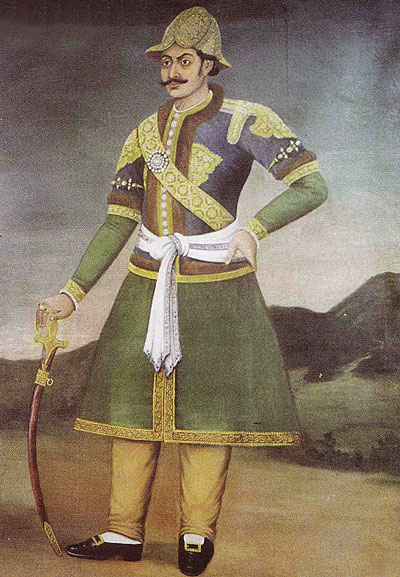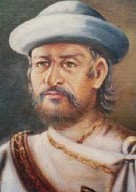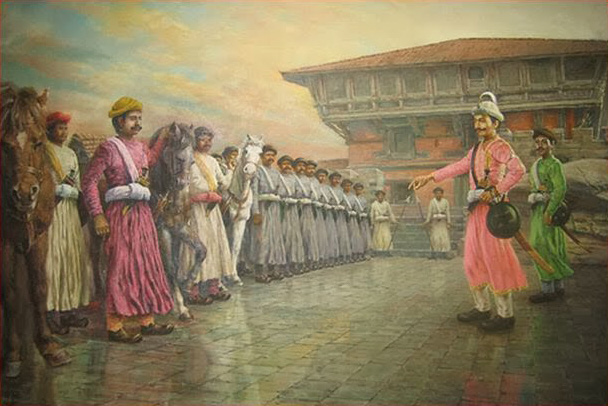|
Thapa
Thapa ( ne, थापा; pronunciation:) is the surname commonly used by North Indian and Nepali people belonging to the Chhetri (Kshatriya) caste of the Khas group and Magar group, a Sino-Tibetan speaking ethnicity. Etymology Thapa was a ''Paikelā'' (warrior) rank of the medieval Khasa Kingdom. Other Paikelās include '' Khaḍgās'', ''Rānās'' and ''Buḍhās''. It is proved through many inscriptions in the present day region of Old Khas Kingdom. Yasu Thapa, Dasu Thapa and Raj Thapa were known warriors from the herostone pillars. One of the herostone inscription of Thapa warrior: The above inscription also proved that Thapa and Khadka (Khadga) were mere military ranks that was born by sons of same father in the country of Khas people. Kshatriya Thapa or Commonly Thapa Khas Thapa are patrilineal groups descended from Khas people . They are popularly known as Thapa Kshatriya or Thapa Kaji. This group was divided into many clans like ''Bagale Thapa'', ''Godar'', ''Hrikse ... [...More Info...] [...Related Items...] OR: [Wikipedia] [Google] [Baidu] |
Thapa Dynasty
Thapa dynasty or Thapa noble family ( ne, थापा वंश/थापा काजी खलक ) was a Kshatriya political family that handled Nepali administration affairs between 1806 and 1837 A.D. and 1843 to 1845 A.D. as Mukhtiyar (Prime Minister). This was one of the four noble families to be involved in the active politics of the Kingdom of Nepal, along with the Shah dynasty, Basnyat family, and the Pande dynasty before the rise of the Rana dynastyor Kunwar family. At the end of 18th century, Thapas had extreme dominance over Nepalese Darbar politics alternatively contesting for central power against the Pande family. Bir Bhadra Thapa was a Thapa of Chhetri group and leading Bharadar during Unification of Nepal. His grandson Bhimsen Thapa became Mukhtiyar of Nepal and established Thapa dynasty to the dominating position of central court politics of Nepal. The Thapa family gave rise to the Rana dynasty of Jung Bahadur Kunwar Rana whose father Bal Narsingh Kun ... [...More Info...] [...Related Items...] OR: [Wikipedia] [Google] [Baidu] |
Bagale Thapa
Bagale Thapa ( ne, बगाले थापा pronunciation:) anciently known as Bagalya Thapa ( ne, बगाल्या थापा) is a prominent clan within Thapa of Khas community. They claim Atreya Gotra. The name of the clan is also transliterated as ''Bagale'', ''Bagalya'', ''Bagaalya'', ''Bagaliya'', ''Bagaley'', ''Bagaale'' or ''Bagaleya''. Family of Bhimsen Thapa and family of Amar Singh Thapa were two influential Bagale Thapa families at the central politics of Kingdom of Nepal. Origins Bagale Thapa genealogy The genealogy traces the lineage of all Bagale Thapas to a male progenitor (''Mūlapuruṣa'') Kalu Thapa Kshatri. The genealogy states that Kalu Thapa had four sons; Punyakar of Pulaam state, Tarapati of Takam state, Biru and Dharmaraj (Jashodhar) of Jamarik state. The genealogy describes that Kaalu adhered to the following sects: " Aatreya gotri Tripravara, Shukla Yajurveda, Dhanurveda and Madhyandini Shakha". Kunwar family legend Kunwar fam ... [...More Info...] [...Related Items...] OR: [Wikipedia] [Google] [Baidu] |
Amar Singh Thapa
Amar Singh Thapa Chhetri distinguished as Badakaji Amar Singh Thapa( ne, बडाकाजी अमर सिंह थापा क्षेत्री), or Amar Singh Thapa The Elder, (also spelled Ambar Simha) also known by the honorific name Bada Kaji ("Senior Kaji") or Budha Kaji ("The Old Kaji"), was a Gorkhali military general, governor and warlord in the Kingdom of Nepal. He was the overall commander of the Nepal Army in the conquest of Western Provinces and authoritative ruler of Kumaon, Garhwal in the Kingdom of Nepal. He was referred by the King of Nepal to have been deployed as Mukhtiyar (equivalent to Prime Minister) of Western Provinces of Kumaon, Garhwal He is often hailed as Living Tiger of Nepal ( ne, ज्यूँदो बाघ; ''jyūm̐do bāgha'') and he was posthumously regarded as one of the national heroes of Nepal, who led the Anglo-Nepalese War for the Gorkhali Army. Amarsingh Chowk Pokhara and Shree Amarsingh Model Higher Secondary School are n ... [...More Info...] [...Related Items...] OR: [Wikipedia] [Google] [Baidu] |
Thapa Kaji
Thapa Kaji is a large social group of people of Jharra/Pure Chhettri caste (Kshatriya varna) in Nepal. Thapas of Uttrakhand And Himanchal State of India are considered as Pahari Rajput. Over a period of time, this community has spread to many parts of the world. The surname originated during the Khas Kingdom in Karnali region during middle age-it referred to a position/post of a warrior. Chhetri is considered a derivative form of the Sanskrit word Kshatriya. "Kaji" means administrator or ruler. It was a hereditary family title awarded to some famous Nepali Kshatriya castes like Thapa, Basnyat/Basnet, Pandey, Kunwar, Bista, Khadka, etc. Majority of Thapas Chhetri speak the Nepali language as mother tongue. The Thapas Chhetris are divided into many sub-castes which are the: * Bagale Thapa * Godar Thapa * Hriksen Thapa * Lamichhane Thapa * Panwar Thapa * Suyal Thapa Thapa Chhetri are found in different parts of current Nepal and some parts of Uttarakhand and Himachal State o ... [...More Info...] [...Related Items...] OR: [Wikipedia] [Google] [Baidu] |
Magar People
The Magar, also spelled as Mangar, and Mongar, are the third largest ethnolinguistic groups of Nepal, indigenous to Western Nepal and representing 7.1% of Nepal's total population according to the 2011 Nepal census. The original home of the Magar people was to the west of Gandaki river, and roughly speaking, consisted of that portion of Nepal which lies between and around about Gulmi, Arghakhanchi, and Palpa. This part of the country was divided into twelve districts known as "''Bahra Magarat''" (Confederation of Twelve Magar Kingdoms), which included the following regions of that period: Argha, Khanchi, Bhirkot, Dhor, Garhung, Ghiring, Gulmi, Isma, Musikot, Pyung, Rising, Satung, and Pyung. During the medieval period, the whole area from Palpa to Rukum Rolpa was called the "Magarat"'','' a place settled and inhabited by Magars. Another Confederation of Eighteen Magar Kingdoms known as "''Athara Magarat''" also existed, and was originally inhabited by Kham Magars. Origin There ... [...More Info...] [...Related Items...] OR: [Wikipedia] [Google] [Baidu] |
Chhetri
Chhetri (Kshetri, Kshettri, Kshetry or Chhettri), ( ne, क्षेत्री ; IAST: ''Kṣetrī'') historically called Kshettriya or Kshetriya or Khas are Nepali speakers of Khas community, some of whom trace their origin to migration from medieval India. Chhetri was a caste of administrators, governor and military elites in the medieval Khas Kingdom and Gorkha Kingdom (later unified Kingdom of Nepal). The nobility of the Gorkha Kingdom mainly originated from Chhetri families. They also had a strong presence in civil administration affairs. The bulk of prime ministers of Nepal before the democratization of Nepal belonged to this caste as a result of the old Gorkhali aristocracy. Gorkha-based aristocratic Chhetri families included the Pande dynasty, the Basnyat dynasty, the Kunwar family, and the Thapa dynasty, (Rana dynasty and other Kunwars). Khas Chhetris were traditionally considered a division of the Khas people with Khas Brahmin (commonly called Khas Bahun). They m ... [...More Info...] [...Related Items...] OR: [Wikipedia] [Google] [Baidu] |
Rana Dynasty
Rana dynasty ( ne, राणा वंश, IAST=Rāṇā vaṃśa , ) is a Chhetri dynasty that imposed totalitarianism in the Kingdom of Nepal from 1846 until 1951, reducing the Shah monarch to a figurehead and making Prime Minister and other government positions held by the Ranas hereditary. They claimed Kshatriya status themselves. Rana dynasty is historically known for the '' iron-fisted rule''. This changed after the Revolution of 1951 with the promulgation of a new constitution, when power shifted back to the monarchy of King Tribhuvan. The Rana dynasty descended from the Kunwar family, a nobility of the Gorkha Kingdom. Due to the marital lineages with the politically reigning Thapa dynasty (of ''Mukhtiyar'' Bhimsen Thapa) from early 19th century, Ranas gained entry to central Darbar politics. Ranas were also linked to a minor faction of the Pande dynasty of Gorkha through the Thapa dynasty. Origins Chronicler Daniel Wright has published the genealogy of Jang Bahadur K ... [...More Info...] [...Related Items...] OR: [Wikipedia] [Google] [Baidu] |
Basnyat
Basnyat/Basnet family or Basnyat/Basnet dynasty ( ne, बस्न्यात वंश/बस्न्यात काजी खलक) was a Khas-Chhetri and a warlord clan family involved in the politics and administration of the Gorkha Kingdom and Kingdom of Nepal. This family got entry into Thar Ghar aristocracy group of Gorkha at the time of King Prithvi Narayan Shah. It was one of the four noble families to be involved in active politics of Nepal together with Shah dynasty, Pande family and Thapa dynasty before the rise of Rana dynasty. This family is descended from Shivaram Singh Basnyat, the commander of Gorkhali forces and a member of Shreepali Basnyat clan of Gorkha. This family was maritally linked to ''Kala'' (Black) Pande section of Pande dynasty through Chitravati Pande who married Kaji Kehar Singh Basnyat. This family was the last Kshatriya (Chhetri) political family to be wiped out from the central power by Jung Bahadur Rana of Kunwar family during the Bhanda ... [...More Info...] [...Related Items...] OR: [Wikipedia] [Google] [Baidu] |
Thapa Family (other)
Thapa family may refer to: *Thapa dynasty or Thapa family, family of Bhimsen Thapa, the most significant political family *Family of Amar Singh Thapa (Elder) **Amar Singh Thapa (father) ** Ranadhoj Thapa (son) ** Ranajor Singh Thapa (son) *Family of Surya Bahadur Thapa **Surya Bahadur Thapa (father) **Sunil Bahadur Thapa (son) *Family of Bhekh Bahadur Thapa **Bhekh Bahadur Thapa (father) ** Bhaskar Thapa (son) **Manjushree Thapa (daughter) *Family of Kamal Thapa **Kamal Thapa (brother) **Ganesh Thapa (brother) *Family of Bhakti Thapa **Bhakti Thapa (patron) **Arjun Bahadur Thapa (descendant) See also *Thapa (other) Thapa may refer to: Surname, clans and peoples *Thapa, surname of Nepalese people of Chhetri and Magar castes * List of people with surname Thapa *Thapa Kaji, Thapas of Kshatriya dignity *Bagale Thapa, Hindu Chhetri clan of Aatreya Gotra *Thapa ... {{disambiguation Nepalese Hindus Nepalese politicians ... [...More Info...] [...Related Items...] OR: [Wikipedia] [Google] [Baidu] |
Khas People
Khas people (; ne, खस) popularly known as Khas Arya are an Indo-Aryan peoples, Indo-Aryan ethno-linguistic group native to the Himalayas, Himalayan region of South Asia, what is now present-day Nepal, Indian states of Uttarakhand, West Bengal and Sikkim. Historically, Khas were the speakers of an ancient ''Khas language'' from the Indo-Aryan language family and the earliest recorded speakers of the Western Pahari languages. The large portion of the Indo-Aryan speakers throughout lower Himalayas were the Khas people. An Indo-Aryan migrations, intrusion of this tribe from the Western Himalayas, Western and Northwestern Himalayas into Central Himalayas is substantiated by the early linguistic evidences related to the Nepali language. They were also known as Parbatiyas/Parbates and are currently known as Paharis/Pahadis. They were also referred to as Yartse in Tibet and are also known as Khasan by Bhotia people. The term ''Khas'' has now become obsolete, as the Khas people hav ... [...More Info...] [...Related Items...] OR: [Wikipedia] [Google] [Baidu] |
Kshatriya
Kshatriya ( hi, क्षत्रिय) (from Sanskrit ''kṣatra'', "rule, authority") is one of the four varna (social orders) of Hindu society, associated with warrior aristocracy. The Sanskrit term ''kṣatriyaḥ'' is used in the context of later Vedic society wherein members were organised into four classes: ''brahmin'', kshatriya, ''vaishya'' and ''shudra''. History Early Rigvedic tribal monarchy The administrative machinery in the Vedic India was headed by a tribal king called Rajan whose position may or may not have been hereditary. The king may have been elected in a tribal assembly (called Samiti), which included women. The Rajan protected the tribe and cattle; was assisted by a priest; and did not maintain a standing army, though in the later period the rulership appears to have risen as a social class. The concept of the fourfold varna system is not yet recorded. Later Vedic period The hymn ''Purusha Sukta'' to the ''Rigveda'' describes the symbolic creation ... [...More Info...] [...Related Items...] OR: [Wikipedia] [Google] [Baidu] |
Unification Of Nepal
The Unification of Nepal, also known as Expansion of Gorkha Kingdom, officially began in 1743 AD (1799 BS) after King Prithvi Narayan Shah of Gorkha launched an aggressive annexation campaign seeking to broaden his own kingdom's border. After conquering the Nepal Mandala, which consisted of the different city-states of the Kathmandu, Lalitpur, Kirtipur and Bhaktapur, Shah moved his hilly capital in Gorkha to the fertile and wealthy city of Kathmandu and adopted the name Nepal for the entire Gorkha Empire. The Shah dynasty would go on to expand the various warring kingdoms that once occupied parts of present-day Nepal into a nation-state that stretched up to the Sutlej River in the west and Sikkim-Jalpaiguri in the east. Before usage by the Gorkha Empire, the Kathmandu Valley was known as Nepal after the Nepal Mandala, the region's Nepal Bhasa name. Invasion of Nuwakot Prithvi Narayan Shah's annexation campaign began with the nearby kingdom of Nuwakot. Nuwakot marked the eas ... [...More Info...] [...Related Items...] OR: [Wikipedia] [Google] [Baidu] |
.jpg)
.jpg)








